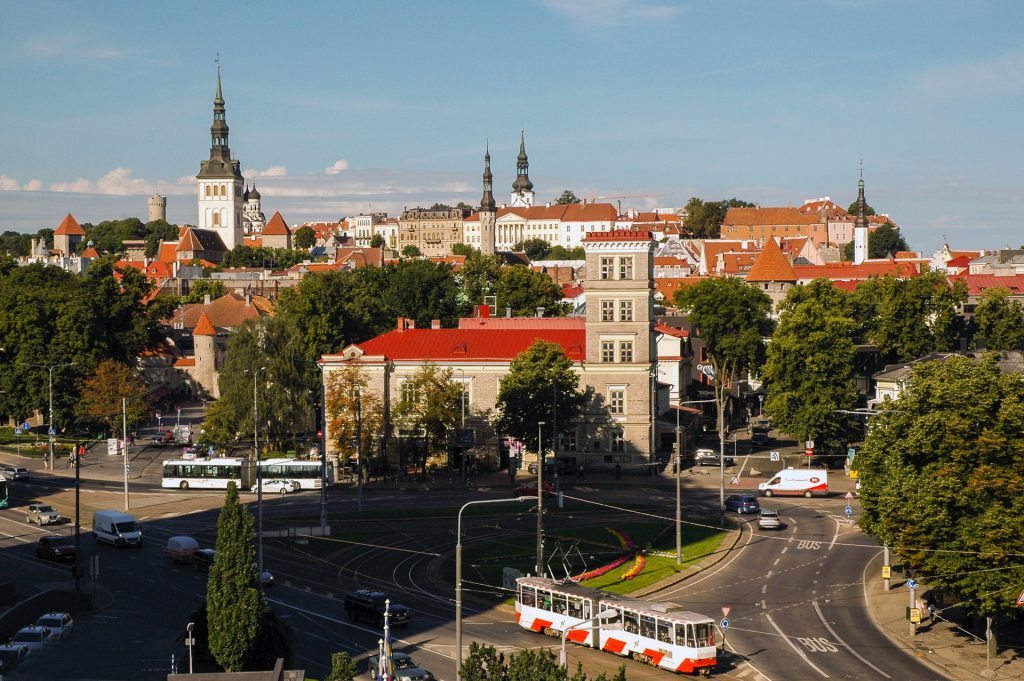It was 3 a.m., and Kaarel Kotkas was sitting in his Tallinn apartment holding a Zoom meeting with Silicon Valley investors. The 26-year-old had been working like that for two months in early 2021: physically in Estonia but living on California time, starting work at 6 p.m. and going to sleep at 4 a.m.
His AI-driven identification verification start-up, Veriff, was in the process of raising capital. Kotkas had considered traveling to California to meet with investors. “But I discovered I could just shift my time zone,” he says. “It’s interesting how comfortable you can feel after three or four days when the jet lag has passed.”
Working like this, he negotiated a $69 million Series B funding round from Institutional Venture Partners and Accel, bringing Veriff one big step closer to a $1 billion valuation — a unicorn, in tech parlance. In the past three decades, Estonia has become a fertile ground for tech start-ups, with more unicorns per capita than any other country except Israel.
Technology was a way for the country to shake off its past and reshape how the world sees it. When Estonia left the Soviet Union in 1991, the tiny nation of 1.3 million people was in a dire situation. The government was almost out of money, and most of the industries were technically obsolete. Huge state-owned companies that had been dependent on orders from the Soviet Union were suddenly going bankrupt, with whole cities of people left without jobs.
Almost 30 years later, things couldn’t look more different. A member of the European Union since 2004, Estonia’s GDP and median income have surpassed Greece’s and Portugal’s. Since 2015, unemployment has been well under 7% and in recent years, many businesses have been facing a shortage of qualified employees to hire, especially in the tech industry: “We’re short at least 10,000 people” has been a complaint for the past 20 years.
The share of Estonians working in the tech industry has been growing every year and now accounts for close to 6% of the entire workforce. Major international companies including Ericsson, Fujitsu and Microsoft each employ hundreds of people in Estonia.
In 1989, almost half of the working population in Estonia was employed in manufacturing (26%) or agriculture (21%). Today the economy has become much more diversified. Manufacturing is still the largest industry in Estonia by employment (with 18% of the workforce), followed by wholesale and retail trade (13%), education (10%), construction (9%) and transportation and storage (7%).
Going digital

The tech sector’s success is the result of intentional governmental policies. Since the 1990s, Estonia has been a forerunner in e-government. About 95% of its citizens file their annual tax returns online. Most contracts are signed digitally. Starting a new company takes 15 minutes and can be done completely online.
Since 2005, Estonians can cast their votes online from anywhere in the world in both local and parliamentary elections. This initially provoked a lot of political discussions about potential cyber security issues and also the meaning of the voting process — should it be a special event in a person’s life, or could it just be a click on a computer? But online voting has steadily gained popularity. In 2019, 43.8% of all voters in Estonia’s parliamentary elections did so online, as did 46.7% of voters in the European Parliament elections — both all-time highs. All this has shaped how the rest of the world sees Estonia, and this is very important for Estonians.
When Tele2 Estonia CEO Chris Robbins came to the country from Canada three years ago, he was ready to be surprised. “I only knew about Estonia by the country’s marketing, which is fantastically good,” he says. “Innovation, e-society and so on. I literally thought I would see flying cars.”
We’re still waiting on the hovercrafts to arrive, but the Ministry of Economic Affairs is pushing for a “real-time economy,” working digitally and seamlessly. The Estonian government reports that 99% of state services are now available online.
All this makes government IT a big part of Estonia’s economy. The public sector employs as many IT people as any large tech company; for many of these companies, the Estonian government is also among their largest customers. For years, Estonian software companies felt no pressure to export their services because of the plentiful government contracts that were always available.
But back in the 1990s, the country was trying to get past its Soviet past with a better story for the future. For Estonia’s former president, a strong supporter of the digital society, Toomas Hendrik Ilves, this was not a nicety but rather a necessity.
Given its economic situation at the time, Estonians questioned if it could ever support the weight of building its own government, military, hospitals, schools, libraries and so on. Embracing computers and online services to assist and augment the public workforce was a way for Estonia to make running the country viable. And since there was little to no existing infrastructure, everything had to be built from scratch, and it would be built with computers.
For Estonians, the tiger represents economic growth but much more — it represents technological growth. The tiger became the symbol of Estonia’s success when in 1995, Ilves and his education minister proposed a megaproject: give every student in Estonia a personal computer.
“It would mean that not only the most educated part of the society learns about computers, but that the whole country would jump two feet first into the 21st century,” Ilves said in a 1995 interview. “Estonia would become a whole other country.”
This sparked a huge national conversation about what kind of country Estonia should be and how to catch up both culturally and economically with the rest of Europe. The project was named Tiger Leap.
In the decade after its launch in 1996, the Tiger Leap program poured hundreds of millions of krooni (the pre-euro currency) into modernizing Estonian schools. They started with connecting all schools to the internet and buying computers for students and teachers. As schools came online, it opened up a whole new world. Hundreds of young Estonian students spent their after-school hours playing computer games and learning to code simple programs. This computer trend had already started before Tiger Leap, but now every school in the country was in the game.
This had a profound effect on Estonian society. Almost overnight, using a computer became the new norm, and a whole generation of people emerged who both enabled and expected a digital revolution. The government and private companies had to start offering digital services because customers, the Tiger Leap generation, demanded it.
Kaarel Kotkas, sitting on his computer at 3 a.m., is very much part of the Tiger Leap generation. Born in 1994 he is a digital native and one of many Estonians who are building their own businesses. According to the government initiative Startup Estonia, there are currently more than 1,100 start-ups operating in Estonia, employing about 6,500 people. In the first quarter of 2021, they generated €255 million in revenue, raised €194 million in funding and paid almost €27 million in employment taxes.
Breeding unicorns
A total of seven unicorns have been founded in Estonia or have an Estonian on the founding team — a total of 51 unicorns have been created across all of Europe. Skype popularized voice over internet protocol and shook up the long-distance phone call market. Wise (formerly TransferWise) is doing the same with international bank transfers. Bolt is changing personal mobility, Pipedrive is helping companies run their sales teams more efficiently, Playtech makes gaming software, Zego is in insurance, and ID.me is in identity verification. Others are sure to follow, and every successful start-up exit creates wealthy new investors in Estonia looking for their next projects.
Seeing the great growth potential in the tech market, in 2014, Estonia set up an e-residency program that allows non-Estonians to become virtual citizens. Every e-resident gets an ID card that enables them to use Estonia’s digital infrastructure to start a company and have a nexus within the European Union, while living anywhere in the world. Estonia now has more than 80,000 e-residents from 170 countries who have created more than 15,000 companies, contributing an estimated €50 million to the Estonian economy.
The tech sector has big goals: Startup Estonia aims to drive the growth and impact of the Estonian technology sector to 15% of GDP by 2025. The Estonian Founders Society predicts the number of people working for startups in Estonia will grow almost tenfold to about 50,000 people by 2030. Start-ups would generate about $10 billion a year and constitute almost a third of Estonia’s GDP.
Start-up founders like to refer to studies that claim every high-salary job created in an export-focused industry creates five additional jobs nearby — shopkeepers, hairdressers, teachers, restaurant workers. This extrapolation would mean that by 2030, close to half of Estonia’s workforce would be supported by the start-up industry.
For his part, Kaarel Kotkas is now back working on Estonian time and is confident in the positive outlook for his company and for the country: “The iron is hot; we know how to strike it.”
Read more
Sign up to keep up to date with ReThink Q.







